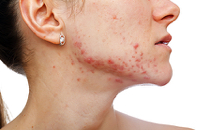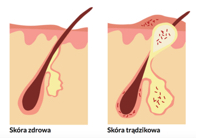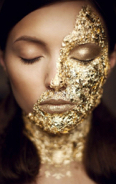Sebacia
 Acne vulgaris (acne vulgaris) is a common inflammatory skin disease that originates from the pilosebaceous unit. The peak of illness is at puberty, but acne can occur in people of all ages. Skin changes with varying intensity occur in the majority of young people, but in 14-36% they are so intensified that they require the inclusion of specific treatment. The main form of acne treatment is local and oral pharmacotherapy.
Acne vulgaris (acne vulgaris) is a common inflammatory skin disease that originates from the pilosebaceous unit. The peak of illness is at puberty, but acne can occur in people of all ages. Skin changes with varying intensity occur in the majority of young people, but in 14-36% they are so intensified that they require the inclusion of specific treatment. The main form of acne treatment is local and oral pharmacotherapy.
 What causes acne?
What causes acne?
Acne is caused by 4 factors:
- Overproduction of sebum
- Blocked pores
- Multiplication of bacteria
- Impact of androgens
SEBACIA
An innovative method of acne treatment straight from the USA is already available in Poland. The Sebacia treatment involves the use of gold microparticles that, using a dermatological laser beam, reach the sebaceous glands and help to overcome the problem at the source. The aim of the treatment is the remodeling of the sebaceous glands, which, due to the heated gold microparticles, return to their normal size, which reduces the production of sebum and visibly alleviates the symptoms of acne.
What are the advantages of Sebacia treatments?
- A surface of treatment covering three causes of acne
- The treatment does not require convalescence
- The procedure is performed without anesthesia
 Preparation for the procedure:
Preparation for the procedure:
The prescribed by the physician, preparations, containing retinoids and/or preparations exfoliating epidermis should be applied 3 weeks before the procedure.
The course of the procedure (it takes about 45 minutes):
- Cleanse the problematic part of the body (including face, cleavage, back)
- Massage the Sebacia ampoule into the skin
- The use of a laser beam
 Sebacia, containing gold microparticles, is applied to the cleansed skin of the selected body part covered by acne. After application, the content of Sebacia ampoules is massaged into the skin using a massager, which allows the active substance to reach the sebaceous glands. The next step is to use a dermatological laser that heats the Sebacia gold microparticles in the pores of the skin. The treatment makes the overproduction of sebum limited, and the appearance of the patient's skin improves.
After the treatment, the skin may be red, but this is a typical symptom, which disappears after about 1-2 hours.
Sebacia, containing gold microparticles, is applied to the cleansed skin of the selected body part covered by acne. After application, the content of Sebacia ampoules is massaged into the skin using a massager, which allows the active substance to reach the sebaceous glands. The next step is to use a dermatological laser that heats the Sebacia gold microparticles in the pores of the skin. The treatment makes the overproduction of sebum limited, and the appearance of the patient's skin improves.
After the treatment, the skin may be red, but this is a typical symptom, which disappears after about 1-2 hours.
* The effects of the treatment may vary depending on the specific case.
Contraindications:
- Pregnancy and breastfeeding,
- Skin infections (e.g. herpes),
- Skin diseases such as: vitiligo, psoriasis, ichthyosis,
- Cancers,
- Naturally tanned skin, in a tanning bed or as a result of using bronzing or self-tanning preparations,
- The use of medicines and photosensitizing herbs,
- Oral therapy with retinoids and a period of over 3 months after the end of treatment.
Frequently asked questions
What is the Sebacia treatment?
The Sebacia treatment works on the source of acne, that is sebaceous glands. With the help of innovative Sebacia gold microparticles and medical laser light, sebaceous glands are reduced and sebum production is limited. This leads to pore cleansing and non-inflammatory acne lesions.Sebacia is performed in 3 sessions, approximately 1 week apart.
When will the improvement of skin condition be visible?
The clinical studies carried out show that the reduction of acne lesions and the improvement of the overall skin condition is already visible within 2-3 months after the last Sebacia treatment.Is it possible to have side effects after the surgery?
As with any medical procedure, the occurrence of side effects is possible. Most side effects are similar to the side effects that occur after treatments using a dermatological laser. Before starting Sebacia, you should consult your doctor to discuss the possibility of the patient performing the procedure.What other treatments are available to treat acne?
The most commonly used methods to alleviate acne are oral or topical medications. Such solutions, however, require the patient to be systematic, and some oral medications, such as isotretinoin, require close monitoring of the patient's condition due to the side effects.
